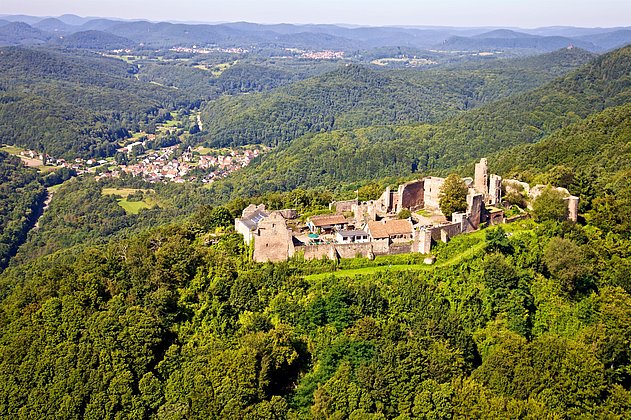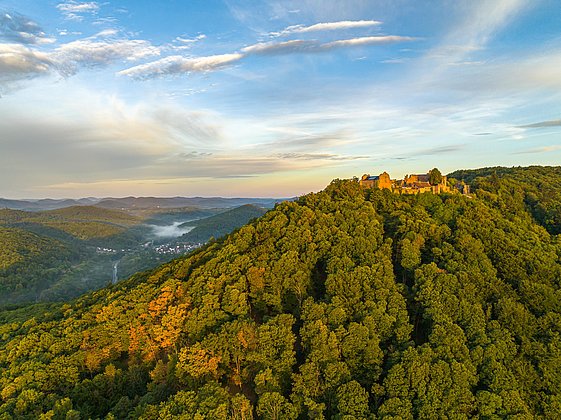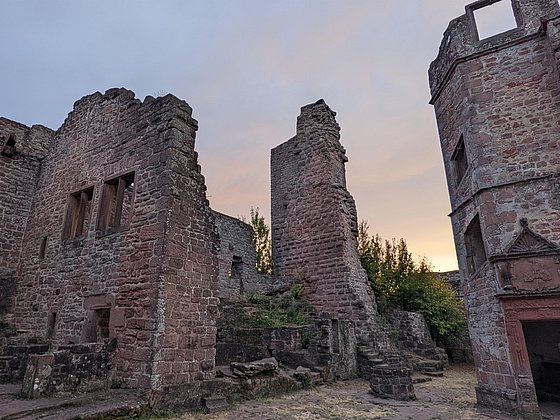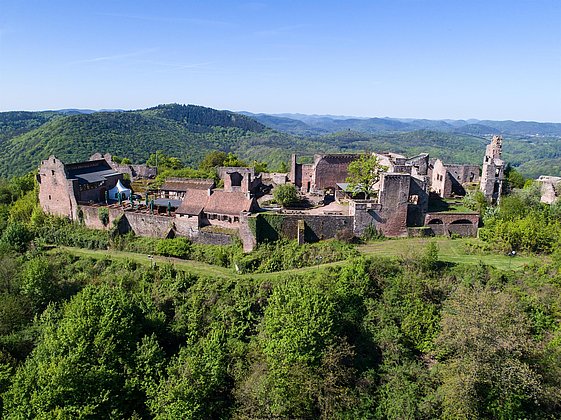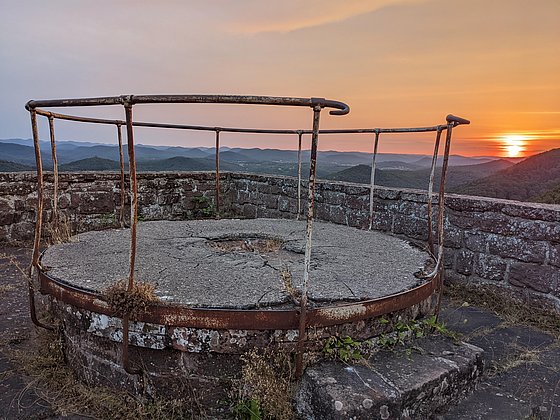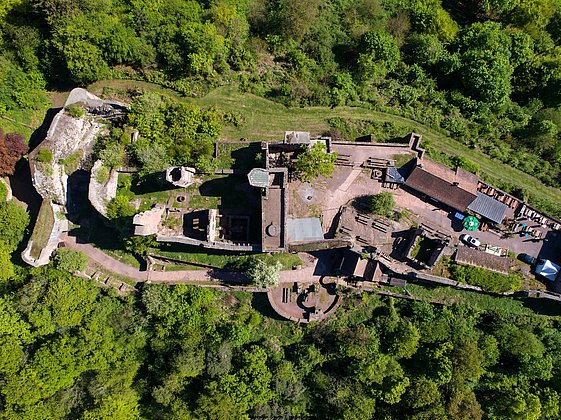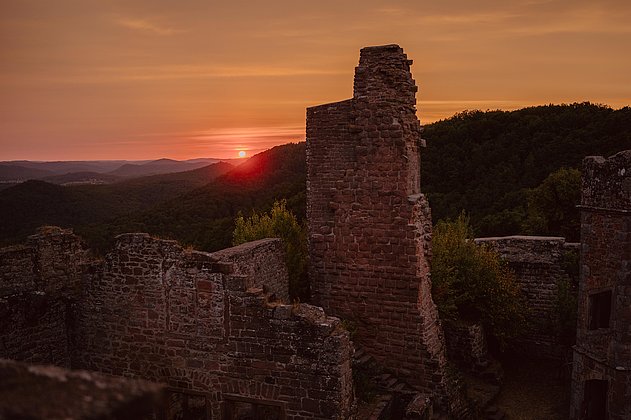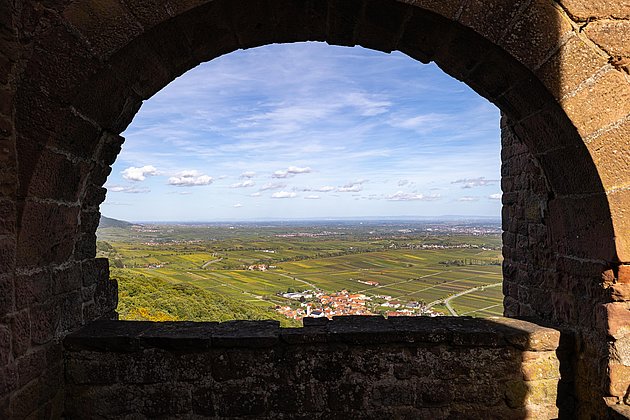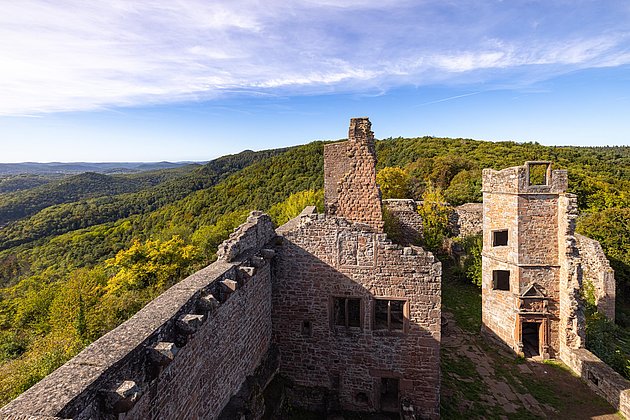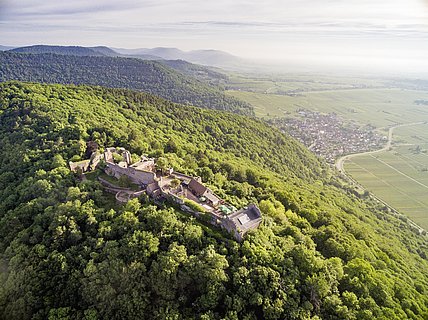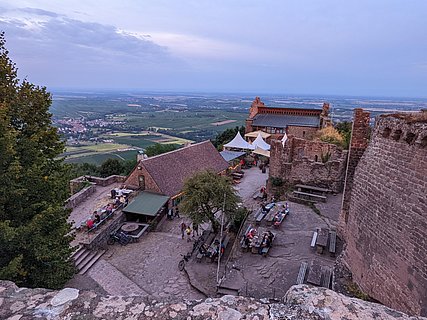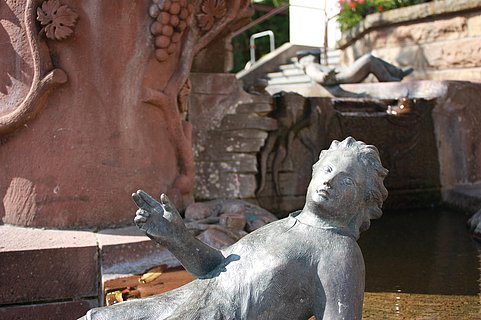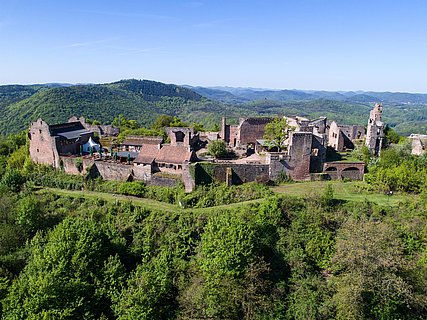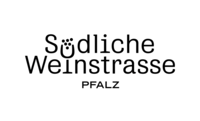Madenburg Castle is perched on the top of the Rothenberg above Eschbach. With a length of 180 metres and a width of 50 metres, it is the largest castle complex in the Southern Palatinate and one of the largest castle complexes in the Palatinate.
The castle complex was probably built at the end of the 11th century as an imperial castle to protect the lands belonging to the complex and control the Kaiserbach Valley. It therefore dates back to a similar era as the nearby imperial Trifels Castle. The castle was first mentioned in 1076 in the Bertholdi Annales as Parthenopolis (Virgin's Castle or Marienburg). The castle was probably in the possession of the diocese of Speyer, whose patron saint was Mary. This is probably how the name Madenburg, the "Castle of the Virgin Mary", which was first mentioned in a document in 1176, came about later on.
In the centuries that followed, the castle passed through many hands, such as the Leiningen, Sickingen and Fleckenstein families, until it was finally bought in 1516 by Bishop Georg von Speyer and Count Palatine near the Rhine along with the associated villages of Eschbach, Ranschbach, Arzheim, Waldhambach and Waldrohrbach. From then on, Madenburg Castle became the episcopal secondary residence and administrative seat of the Madenburg district, along with the Kestenburg (Hambach Castle).
During the Peasant War in 1525, Madenburg Castle was looted and burned to the ground. In the years that followed, the castle was rebuilt and partially extended under the Speyer bishops. During the Thirty Years' War (1618–1648), the castle was conquered in rapid succession and occupied by Spanish, Austrian, Swedish and French troops until 1648, when it once again became the property of the Bishop of Speyer.
In 1680, French King Louis XIV asserted claims to properties of the Bishopric of Speyer , including Madenburg Castle. A French garrison was stationed at the castle. The troops were withdrawn in 1689 and the castle was blown up in the Palatinate War of Succession.
When, during the French Revolutionary Wars of the 1790s, the area on the left bank of the Rhine and today's Palatinate was occupied by French troops and finally became part of France, the Madenburg estate met its end, the castle became French national property and, in 1800, it was auctioned off to three Landau citizens.
In the years that followed, the castle changed hands frequently after sales and auctions, until 38 citizens of Eschbach acquired Madenburg Castle and Schloßberg in 1826.
After the wars of liberation and the Congress of Vienna (1815), the Palatinate had become part of the Bavarian Kingdom and was ruled by King Ludwig I from 1825 onwards. After the relationship between the Palatinate and Bavaria was severely strained following Hambach Festival in 1832, the citizens of Eschbach offered Madenburg Castle to Crown Prince Maximilian as a reconciliatory and wedding gift in 1842. However, he declined and chose Hambach Castle as his summer residence.
In the 1840s, Madenburg Castle rose to prominence outside the region thanks to two special events: The Eschbacher Rutsch in 1843 (see Rutschbrunnen Fountain) and a rally in 1848 with the gifted publisher and distinguished member of Frankfurt's St. Paul's Church Robert Blum.
In 1870, the Madenburgverein ("Madenburg Association") was founded, which bought most of the forest and castle rights in the years that followed. The association has carried out various restoration works, most recently the reconstruction of the historic fountain impeller.
Following extensive restoration work, Madenburg Castle now impressively reflects its former splendour. A permanent exhibition at the castle reveals the history of its origins. One of the towers is accessible and offers not only a fabulous view of the sea of vines and the Rhine Valley, but also over the Palatinate Forest and the Wasgau region. The Madenburgschänke serves typical Palatinate food and drink.
It can be reached on foot from Eschbach or halfway up from the Madenburg hiking car park.
Madenburg Castle is one of the district's cultural monuments.


